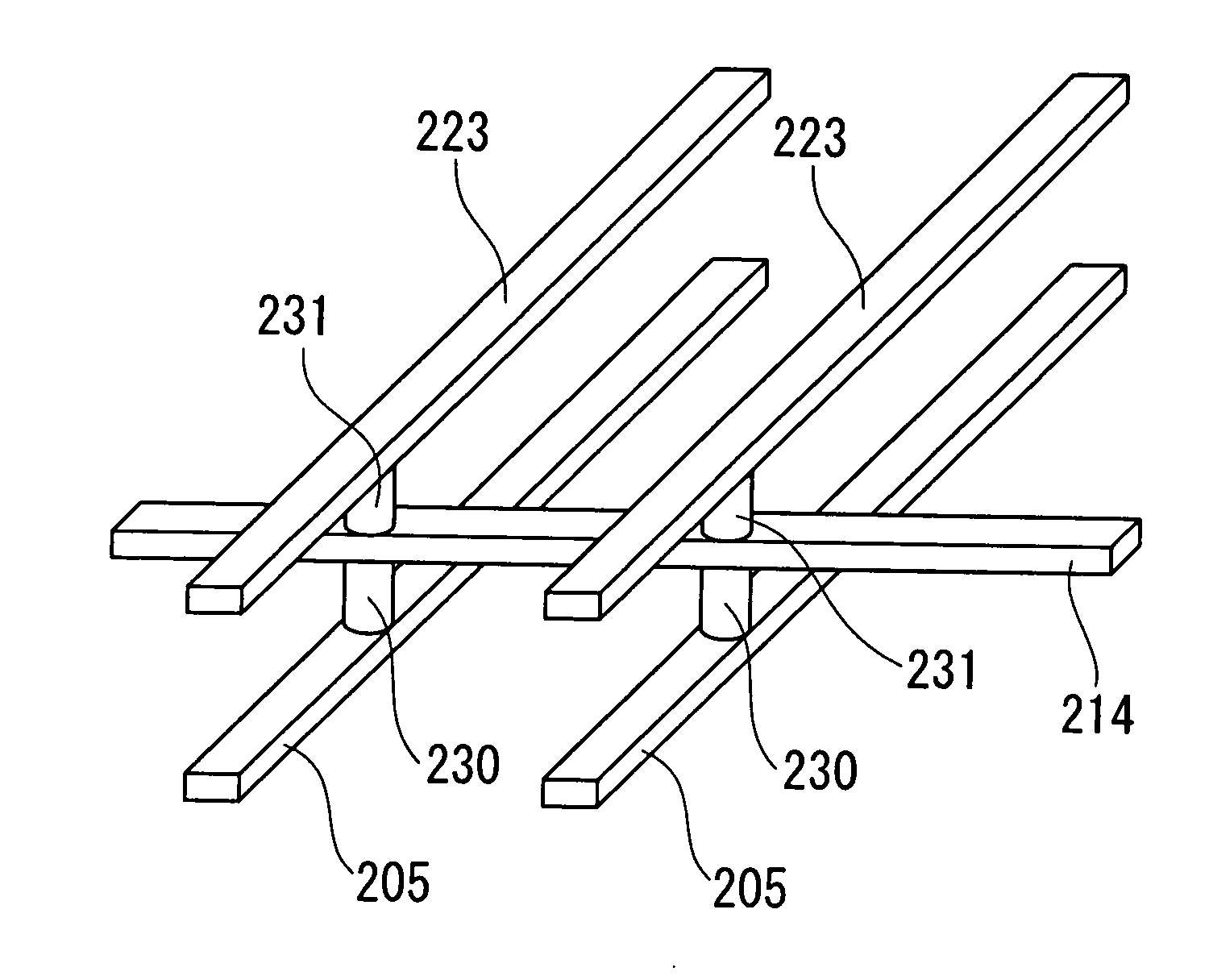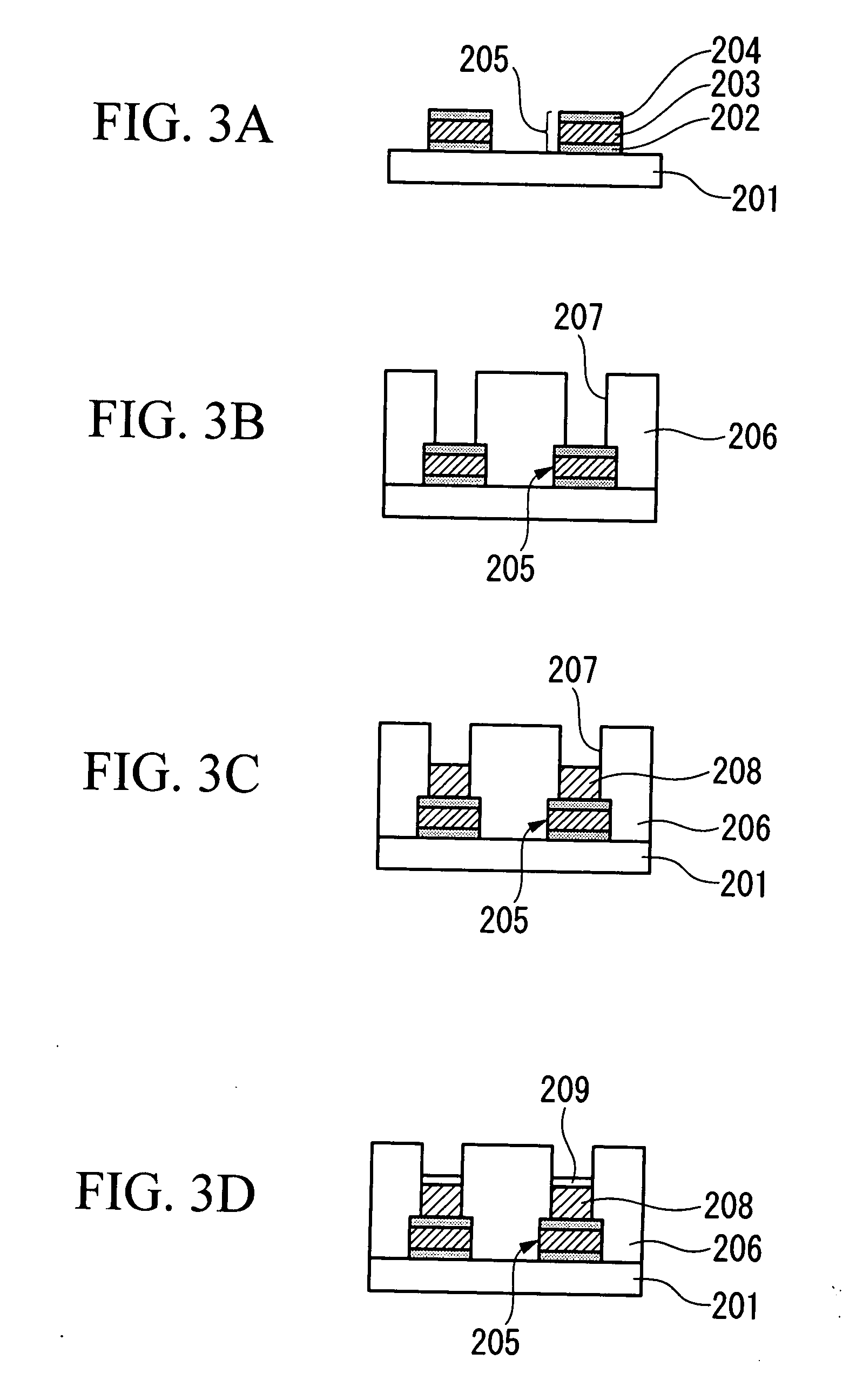Semiconductor storage device and method of manufacturing the same
a technology of semiconductor storage and memory cells, applied in semiconductor devices, diodes, electrical devices, etc., can solve the problems of poor efficiency, inability to easily expand storage capacity, and inability to easily increase memory cell density, so as to prevent the collapse of memory cells during manufacturing processes, improve the effect of efficiency and improve the quality of li
- Summary
- Abstract
- Description
- Claims
- Application Information
AI Technical Summary
Benefits of technology
Problems solved by technology
Method used
Image
Examples
first embodiment
[0092]Hereinbelow, a first embodiment is explained referring to FIG. 1 through FIG. 5B. FIG. 1 is a perspective view showing the configuration of a portion of the semiconductor storage device in accordance with the present embodiment. FIG. 2 is a schematic cross-sectional view showing principal portions of the semiconductor storage device in accordance with the present embodiment. FIG. 3A through FIG. 5B are process diagrams explaining a method of manufacture of the semiconductor storage device shown in FIG. 1 and FIG. 2.
[0093]As shown in FIG. 1, the semiconductor storage device of the present embodiment is mainly configured from first wires 205 extending in one direction, second wires 214 extending in a direction intersecting the first wires 205, and memory cells 230 provided in contact holes positioned at each portion of intersection of first wires 205 and second wires 214, so as to connect the first wires 205 and second wires 214.
[0094]On the opposite side of the second wires 214...
second embodiment
[0136]Next, a second embodiment is explained, referring to FIG. 6 and to FIG. 7A through FIG. 7D. FIG. 6 is a schematic cross-sectional view showing principal portions of the semiconductor storage device in accordance with the present embodiment. FIG. 7A through FIG. 7D are process diagrams used to explain the method of manufacture of the semiconductor storage device shown in FIG. 6. Of the configuration shown in FIG. 6 through FIG. 7D, portions which are the same as in the configurations shown in FIG. 1 through FIG. 5B are assigned the same symbols, and explanations thereof are omitted.
[0137]As shown in FIG. 6, the circuitry necessary for input and output of data to and from memory cells 308 is formed on a semiconductor substrate 200 using MOS type transistors and similar. Furthermore, dielectric film comprising silicon oxide film or similar is formed on the semiconductor substrate 200, and the first wires 205 serving as bit lines are formed on the dielectric film 201; above the fi...
third embodiment
[0152]As a third embodiment, a semiconductor storage device comprising storage elements which utilize the CER phenomenon is explained, referring to FIG. 8. FIG. 8 is a schematic cross-sectional view showing principal portions of the semiconductor storage device in accordance with the present embodiment. Of the configuration shown in FIG. 8, portions which are the same as in the configurations shown in FIG. 1 through FIG. 5B are assigned the same symbols, and explanations thereof are omitted.
[0153]In FIG. 8, a dielectric film 201, formed using a silicon oxide film or similar, is formed on the semiconductor substrate 200. On the dielectric film 201 is formed a laminated film comprising four layers which are a TiN layer 502, a layer 503 of a high-melting point metal such as tungsten, a TiN layer 504, and a Ti (titanium) layer 540; then patterning is performed, to form first wires 505 as bit lines.
[0154]An interlayer dielectric film 506a of silicon oxide or similar is formed so as to co...
PUM
 Login to View More
Login to View More Abstract
Description
Claims
Application Information
 Login to View More
Login to View More - R&D
- Intellectual Property
- Life Sciences
- Materials
- Tech Scout
- Unparalleled Data Quality
- Higher Quality Content
- 60% Fewer Hallucinations
Browse by: Latest US Patents, China's latest patents, Technical Efficacy Thesaurus, Application Domain, Technology Topic, Popular Technical Reports.
© 2025 PatSnap. All rights reserved.Legal|Privacy policy|Modern Slavery Act Transparency Statement|Sitemap|About US| Contact US: help@patsnap.com



